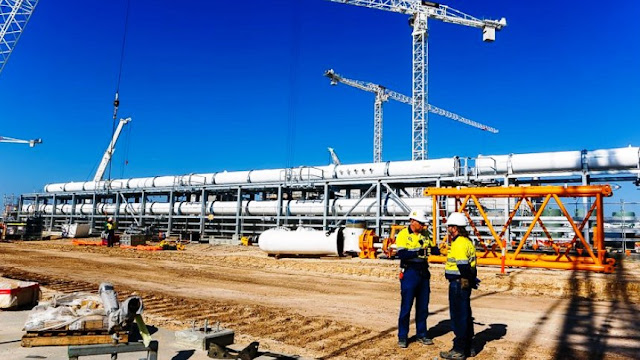Practice
What You Preach!
When we walk into an organisation and read signs
saying, ‘Everyone Home Safe, Every Day
or Every Day is a Good Day to go Home
Safe’, in our business, we look for how the organisation actually does this.
Most times, you hear and see the traditional Leadership style which is one that
has a telling notion, top order pushing down. A business should be asking
themselves, are they really making sure ‘Everyone
Home Safe, Every Day’? Or is this just another safety slogan with no
substance?
You never seem to hear discussions of leaders asking
for ideas or input from the employees. No communication on how they are going
to carry out their tasks. Rarely do you hear them ask if they know a safer way
to act out the job. Instead we see a leader standing there with a piece of
paper dictating on how to do their job. Not often do we see workers developing
their own work plan, a generic SWMS and or JSEA. Someone else gives direction
to what is going into the documents. The workers appear reserved from speaking
up with any valuable input. I remember on a few occasions when running safety
training for workers on the Coal Seam Gas projects in QLD; I would ask “who
thinks there is too much paperwork and why do they think that”? They were
already flustered as the training they were about to receive was more
paperwork, for observing one another’s behaviours. The added was pressure was
coming from the client. Their answers were all very similar no matter what
company you asked, ‘too much meaningless, ass covering paperwork, it does
nothing to manage the risks we are playing with’. The workers felt that they
were not heard nor asked of their thoughts with the hazards and risks. Are we
really achieving safe home every day? Do we overwhelm our workforce with
meaningless paper work? Should we strip back to the bare bones and engage our
risk takers, risk makers? Are we truly engaging our workers and listening to
the real stories?
Too often we see organisations buying into
generic off the shelf programs that does not suit their true business needs,
leaving them with by-products that impact on their risk management. Perhaps it
is a legitimate fear of doing wrong, getting into trouble or the need for a
quick fix that drives businesses to make such decisions. The issue is most of
these off the shelf documents don’t encourage communication consultation,
instead they sit in the office book shelf or on a computer and don’t see the
light of day in the field. Organisations then think they have solved that
problem and there is no need to reassess their processes in their business.
What answers would you get in your organisation
if you ask this question? ‘If we strip
back the policies and procedures in the workplace will it impact on the way the
workers manage risk?’ Asking this question just may surprise you. We asked
this question with some field based workers and the response was, “we don’t use the paperwork in the field
anyway, we just tick and flick it.” They are reverting back to their own
knowledge as they feel it is the safest option.
Their belief is the documents don’t have any value as they’ve been
created by someone in the office who doesn’t even perform their job tasks. They
couldn’t see how anyone who didn’t do their job, could consider the actions
they took in the workplace. What can we do to have our workers see value in the
system documents? How can we create harmony with workers and systems so they
mirror reflect one another?
We believe that it is critical to have all
systems and documents designed and developed with the employees in the field of
work and then look how to marry it with compliance. Tailor making company
systems is important, it helps keep cohesive beliefs and values towards the
organisations trajectory. It also ensures if variation arises it is not so
frightening to amend the document, whereas generic off the shelf documents
creates the sense of rigidness and should not be changed. If we cut down on the
bureaucracy and see our people as the solution and not the problem, would this
influence the way risk is managed in your business?
Giving control and empowering our workers is a
great way of gaining better learnings and understandings of risk in the
workplace. It’s not only safety that benefits from empowering your workers. It
helps with quality, efficiencies, engagement, worker compensation premiums, and
more, resulting in a healthy bottom line. Seeing this approach carried out in a
workplace gives you a sense of trust and belief within the organisation, a
feeling of openness and honesty. Workers need to have ownership of the work and
risks they are dealing with on a day to day basis for the business to be successful.
Leadership is about engaging and empowering our
followers to lead. Giving them power to manage their own risk (Risk makers,
Risk takers). No paperwork understands their thinking at the time and situation
when risk takes place. What is your leadership creating in your Organisation?
How does your leadership tackle risk management? Is your organisation
practising what they preach? Is their slogan/mission statement representative
of the actions in the business?
Written by
Dennis Millard
